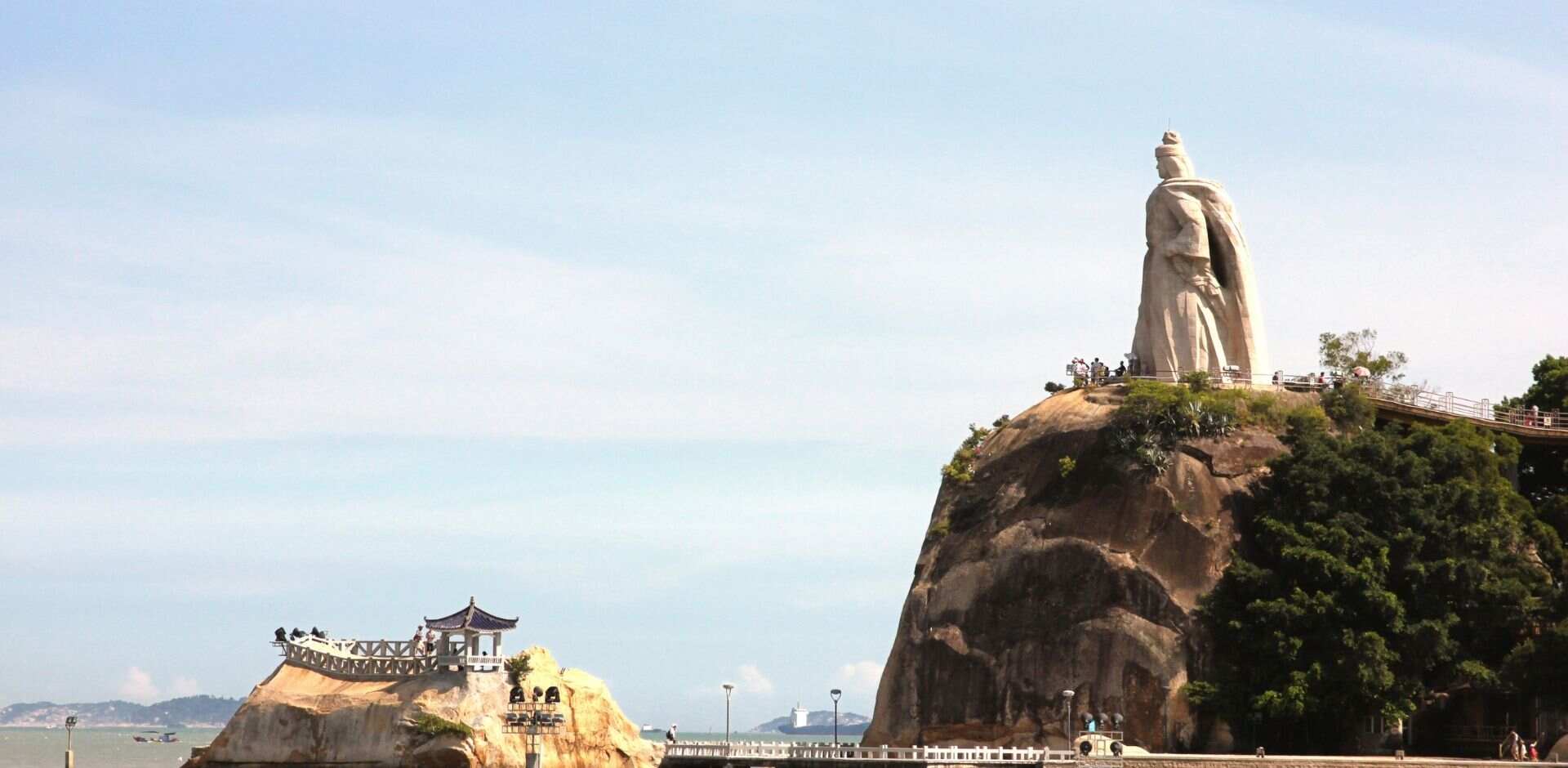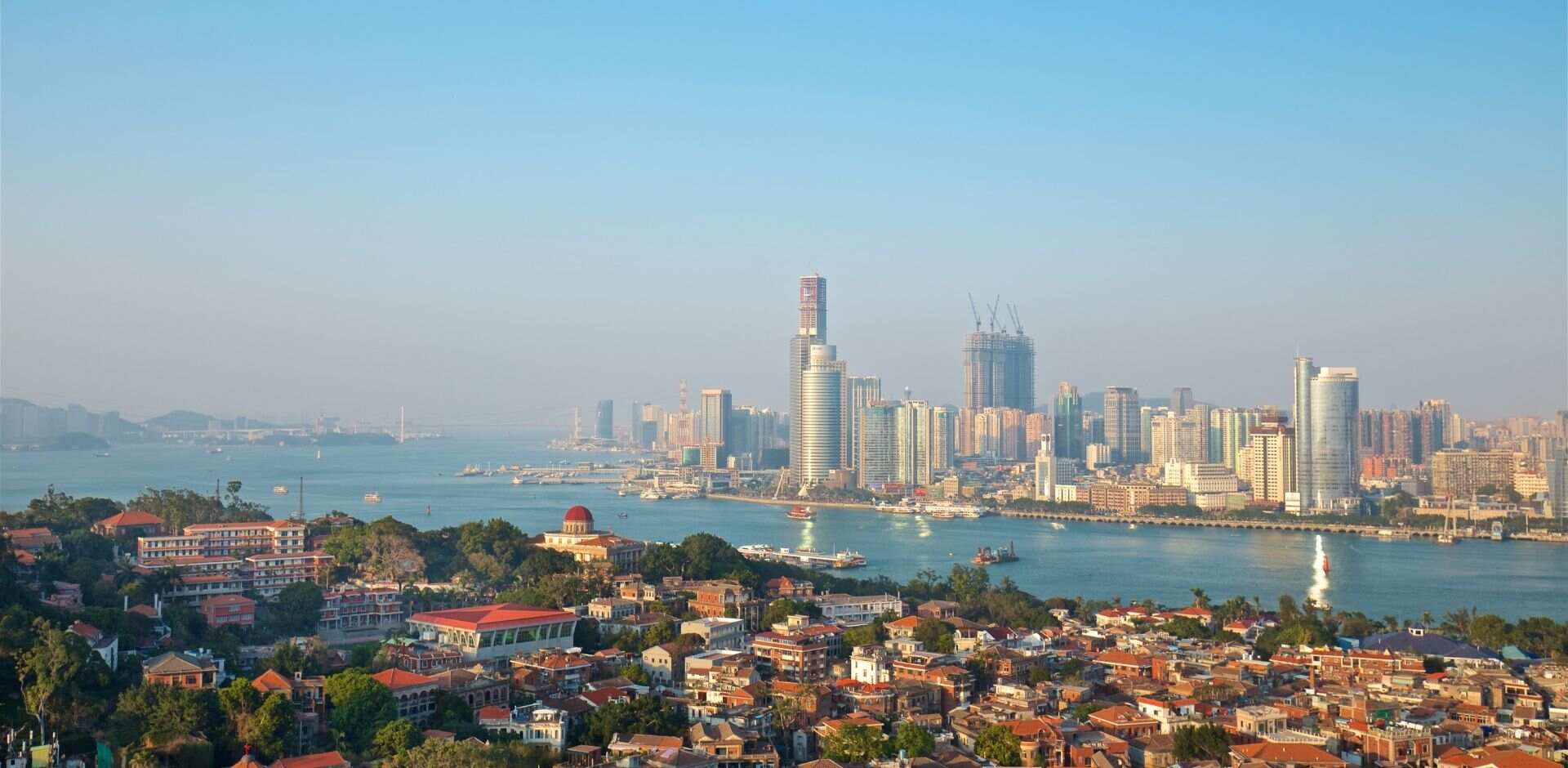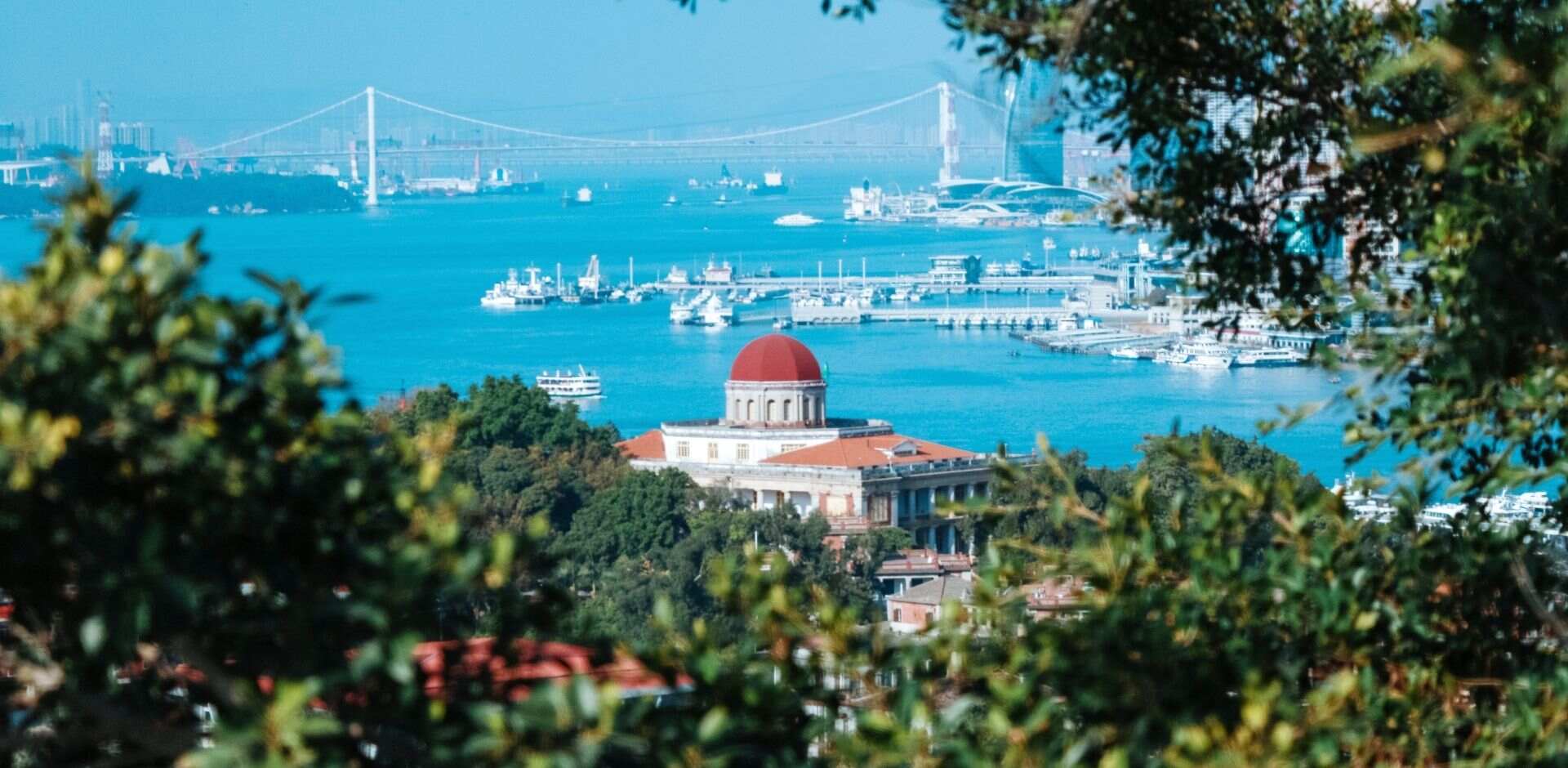Xiamen, a coastal port in Fujian Province formerly known as Amoy, is now one of China’s appealing and well-preserved resort cities. It boasts rich cultural relics, historical sites, vibrant local customs, and a lively modern atmosphere.

Gulangyu Island
As a place of residence for Westerners during Xiamen's colonial past, Gulangyu is famous for its architecture and for hosting China's only piano museum.
Home to more than 200 pianos, it's no wonder Gulangyu has been bestowed nicknames such as "Piano Island," "The Town of Pianos," and "The Island of Music". The Chinese name for Gulangyu even has musical significance. Kó͘-lōng, translated as "drum waves," refers the sound of ocean waves crashing upon the island's reefs.
Gulangyu is also host to a Koxingga museum, Hai-toe Se-kai Marine World, a subtropical garden containing plants various foreign and exotic plants, as well as Xiamen Museum.
A pedestrian-only destination, the only vehicles on Gulangyu are fire trucks and electric tourist buggies. The narrow streets on the island, coupled with varied international architectural styles, make it rife for exploration. The site is classified as an AAAAA scenic area by the China National Tourism Administration.
Nanputuo Temple
Nanputuo Temple consists of four separate halls of worship, as well as monks' quarters and some of the pristine grounds and landscaping you'll find in any Chinese temple. Stone carvings, lotus-filled ponds and secluded caves are scattered about the grounds. If it's good luck you seek, try tossing a coin onto the rock behind the main temple. Legend has it that if the coin stays put, good luck is in your future. Behind the smoky courtyards you will discover libraries, the monks' quarters, temples and statues of chubby Buddha Milefo (Wǔlǎo Fēng, 五老峰). Stroll out upon the "peak of five old men," which overlooks the South China Sea and offers stunning views of Xiamen University campus and the sprawling urban metropolis of Xiamen.

Coastal Xiamen has been an important port for centuries, and became one of China’s first Special Economic Zones in the 1980s.
It is a dynamic, affluent and modern city, known for its clean and pleasant environment.
The main tourist area is Gulangyu, a small traffic-free island, which is home to some beautiful old colonial-style buildings.

Sunlight Rock
Sunlight Rock (Riguangyan), towering 92.68 metres above the sea on Gulangyu Island. The climb up to the 40-metre-wide rock is leisurely, wind through pleasant scenes of new mansions and ancient trees. At the high point of the mountain, you are rewarded with a spectacular bird's-eye view of the entire island!
Xiamen Botanical Gardens
Established in 1960 as a landscape park surrounding Wanshiyan Reservoir, Xiamen Botanical Gardens span an area of nearly 5 kilometres. The gardens are host to a collection of more than 5,300 types of tropical and subtropical ornamental plants. The grounds also feature 29 specialty plant gardens, including Palm Islet, World of Cacti, Flower Gallery, Pine and Fir Park, Fir Lawn and Rosery Park. With rolling hills, peculiar rocks, and a multitude of stone inscriptions, Xiamen Botanical Gardens is famous throughout the province scenic spot as a place of cultural intrigue and man-made botanical wonders.

Shangri-La Hotel, Xiamen, offers convenient transportation links, including various public transportation options, hotel limousines, and taxi services.
A local bus terminal is situated next to the hotel, and taxis are available to all destinations. The MTR is expected to be in operation this year, with metro station only a short walk from the hotel.
Shangri-La Hotel, Xiamen, is located just 10 kilometres from Xiamen International Airport and nearby to the Xiamen South train station.

Shuzhuang Garden
Shuzhuang Garden features majestic paths snaking through the grounds, crossing
over koi ponds and winding through impressive rock sculptures. Hidden
sculptures of all 12 zodiac animals make for a garden adventure - can you find
them all? Shuzhuang Garden is also home to Gulangyu’s famous Piano Museum, a
look at pianos throughout history, and a private art museum.
Zengcuoan Village
In the ancient Zengcuoan Village, with a history spanning over a thousand years,
each brick forms a painting, each old house implies a history, and each
villager represents a fresh memory of Zengcuoan. Located at the side of Huandao
Road, Wenchuang Village of Zengcuoan covers an area of 1.25 square kilometers
and is hailed as “China’s artistic fishing village,” by domestic and
foreign tourists alike.
Surrounded by mountains and the sea, with Xiamen University nearby, Zengcuoan spontaneously established the initial business of Wenchuang Village. Afterwards, the government provided support to business owners, merchants and youth, with a passion for culture and art, to negotiate for co-management of the village. Today, Wenchuang Village of Zengcuoan transformed into an enchanting “urban village.”
Living in a lodge, falling asleep in the sound of sea waves and waking up to birdsong, walking on the street lanes, where unique storefronts will catch your gaze and stop you in your tracks – this is life in Zengcuoan. Ramble about the sands and cycle along Huandao Road and soak in the gorgeous landscape of the original ecological village of Xiamen Island. Huandao Road embodies a beautiful vision in a joyful and peaceful place, far away from vanity and the modern-day hustle.
Explore this artistic fishing village and feel its youth, artistry, passion and dreams!

Zhongshan Road Pedestrian
Street
Centred in the heart of Xiamen’s commercial area, Zhongshan Road Pedestrian Street
covers a total area of 1 million square metres and comprises nearly one-third
of the total business area of Xiamen. This beautiful and prosperous commercial
corridor is home to a serried ranks of stores and draws daily crowds eager for
deals.
Strolling along Zhongshan Road, one a palpable sense of vitality abounds as merchants jockey in competition. All merchants have agreed to a set of rules intended to maintain proper business ethics while offering various conveniences and advantages to shop-goers. Many of the shops and stores at Zhongshan Road have been awarded for their pleasant manners and trusted business enterprises.
The reputation of being a “good street” without “fake shops” have established the Zhongshan Road Pedestrian Street as a positive and pleasant environment for trading, shopping, and doing business.
SM Mall
Located on Jiahe Lu and spanning 120,000 square metres, SM Mall is home to a
Wal-Mart Super Center, a Watson's outlet, a variety of restaurants and fast
food chains, large book store, a large selection of furniture stores,
and a Cyber City, featuring a broad selection of computers, computer
accessories, and a wide range of electronic products.
